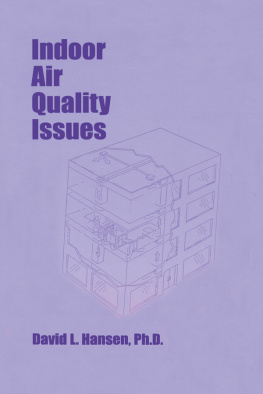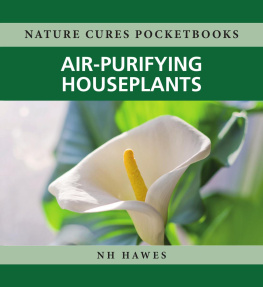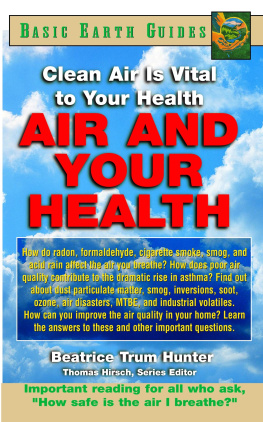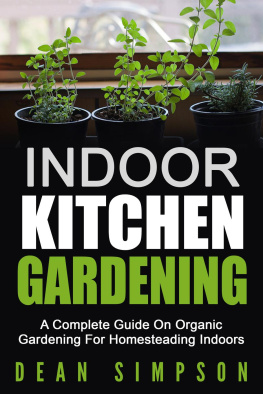Cover

| title | : | Indoor Air Pollution and Health Clinical Allergy and Immunology ; 9 |
| author | : | Bardana, Emil J. |
| publisher | : | Informa Healthcare |
| isbn10 | asin | : | 0824794796 |
| print isbn13 | : | 9780824794798 |
| ebook isbn13 | : | 9780585377988 |
| language | : | English |
| subject | Indoor air pollution--Health aspects. |
| publication date | : | 1997 |
| lcc | : | RA577.5.I55 1996eb |
| ddc | : | 613/.5 |
| subject | : | Indoor air pollution--Health aspects. |
Page a
Indoor Air Pollution and Health
Page b
CLINICAL ALLERGY AND IMMUNOLOGY
Series Editor
M ICHAEL A. K ALINER , M.D.
Medical Director
Institute for Asthma and Allergy
Washington, D.C.
- Sinusitis: Pathophysiology and Treatment, edited by Howard M. Druce
- Eosinophils in Allergy and Inflammation, edited by Gerald J. Gleich and A. Barry Kay
- Molecular and Cellular Biology of the Allergic Response, edited by Arnold I. Levinson and Yvonne Paterson
- Neuropeptides in Respiratory Medicine, edited by Michael A. Kaliner, Peter J. Barnes, Gert H. H. Kunkel, and James N. Baraniuk
- Provocation Testing in Clinical Practice, edited by Sheldon L. Spector
- Mast Cell Proteases in Immunology and Biology, edited by George H. Caughey
- Histamine and H-Receptor Antagonists in Allergic Disease, edited by F. Estelle R. Simons
- Immunopharmacology of Allergic Diseases, edited by Robert G. Townley and Devendra K. Agrawal
- Indoor Air Pollution and Health, edited by Emil J. Bardana, Jr., and Anthony Montanaro
ADDITIONAL VOLUMES IN PREPARATION
Genetics of Allergy and Asthma: Methods for Investigative Studies, edited by Malcolm Blumenthal and Bengt Bjrkstn
Page i
Indoor Air Pollution and Health
edited by
Emil J. Bardana, Jr.
Anthony Montanaro
Oregon Health Sciences University
Portland, Oregon

Page ii
Library of Congress Cataloging-in-Publication Data
Indoor air pollution and health / edited by Emil J. Bardana, Jr., Anthony
Montanaro.
p. cm. (Clinical allergy and immunology ; 9)
Includes index.
ISBN 0-8247-9479-6 (alk. paper)
1. Indoor air pollutionHealth aspects. I. Bardana, Emil J.
II. Montanaro, Anthony. III. Series.
RA577.5.I55 1996
613.5dc20
96-36591
CIP
The publisher offers discounts on this book when ordered in bulk quantities. For more information, write to Special Sales/Professional Marketing at the address below.
This book is printed on acid-free paper.
Copyright 1997 by Marcel Dekker, Inc. All Rights Reserved.
Neither this book nor any part may be reproduced or transmitted in any form or by any means, electronic or mechanical, including photocopying, microfilming, and recording, or by any information storage and retrieval system, without permission in writing from the publisher.
Marcel Dekker, Inc.
270 Madison Avenue, New York, New York 10016
Current printing (last digit):
10 9 8 7 6 5 4 3 2 1
PRINTED IN THE UNITED STATES OF AMERICA
Page iii
Introduction
Americans are spending increasingly more time indoors, and patients frequently complain that their indoor air may be contributing to their health problems. We certainly are building both our residential and commercial environments with an eye toward energy conservation, thereby allowing less fresh air into the indoor environment. Clinicians are seeing an increasing incidence of allergy and asthma, with a greater proportion of patients sensitive to indoor allergens, such as dust mite, dog and cat dander, cockroaches, and molds. These patients are sick perennially and consume a larger portion of health care dollars. Advice on how to minimize indoor air pollution is hard to find. In fact, to my knowledge, there are no other resources where patients, clinicians, and builders can find advice on how to reduce exposure to indoor allergens.
Moreover, indoor air pollution also includes concerns about radon, cigarette and other smoke-related exposures, chemicals, and pesticides. The syndrome of multiple chemical sensitivity is poorly defined, has escaped clear-cut medical understanding, and yet is of great concern to many patients. While many clinicians have ideas about what this syndrome is and what it is due to, there are few bonafide references from which clinicians may seek advice. This book contains an excellent chapter on this topic. Along the same lines, Chapter 18 clarifies regulatory issues related to indoor air, and, finally, Chapter 19 gives practical advice on home building designed to reduce allergen and pollutant exposure, which should prove useful to all of us who advise patients in this respect. I hope that architects and builders review this book, and this chapter in particular, when they consider the needs of their clients.
Overall, the editors, Drs. Bardana and Montanaro, did a terrific job in assembling the authors for this book. It was our intention that this book serve the needs of patients, clinicians, and the building industry. I believe that the editors have succeeded in this endeavor, and that this book will help many people as we move into the next century.
Michael A. Kaliner
Page iv
Page v
Preface
This text originated from a request by Dr. Michael A. Kaliner to prepare a comprehensive textbook on indoor air pollution which would become part of the Clinical Allergy and Immunology series. It was understood from the outset that the scope of the book would extend beyond the commonly accepted boundaries of the allergic response, and would appeal to a rapidly expanding audience that has become increasingly interested in the issue of indoor air quality and its effect on health and comfort.
Buildings are designed and operated to provide safe and healthy environments that are conducive to the productivity and well-being of their occupants. Since the oil embargo of 1973, there has been a concerted effort to use energy more efficiently. This clearly impacted on the manner in which buildings were constructed, insulated, furnished, heated, cooled, and ventilated. An increasing number of buildings were noted to be inadequate in these areas, with resulting losses in productivity and even illness. This has also precipitated a variety of litiginous actions by persons seeking compensation for perceived ill health effects as well as for other reasons. Certain groups who promote a brand of toxic terror among our population have fueled these actions. As a result, many Americans appear to be in the grip of chemical phobia.
Clearly, we have a major problem: many of our buildings supply an inferior brand of viable air for their occupants. Although much has been learned over the past several decades, we still know amazingly little about the nature and concentration of indoor pollutants, and even less about their short- and long-term effects on our health.
Next page






